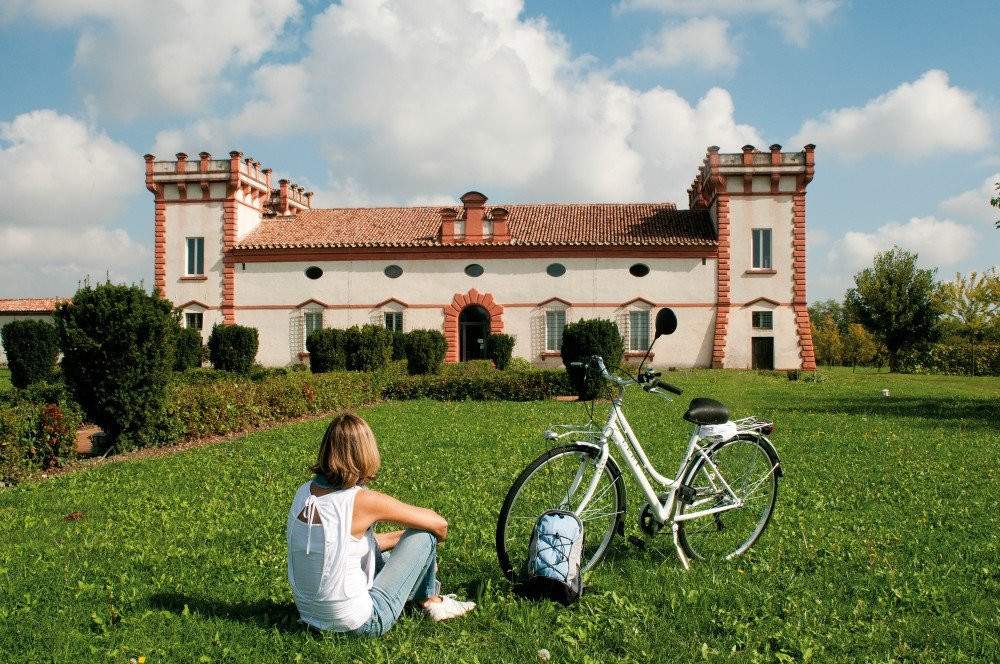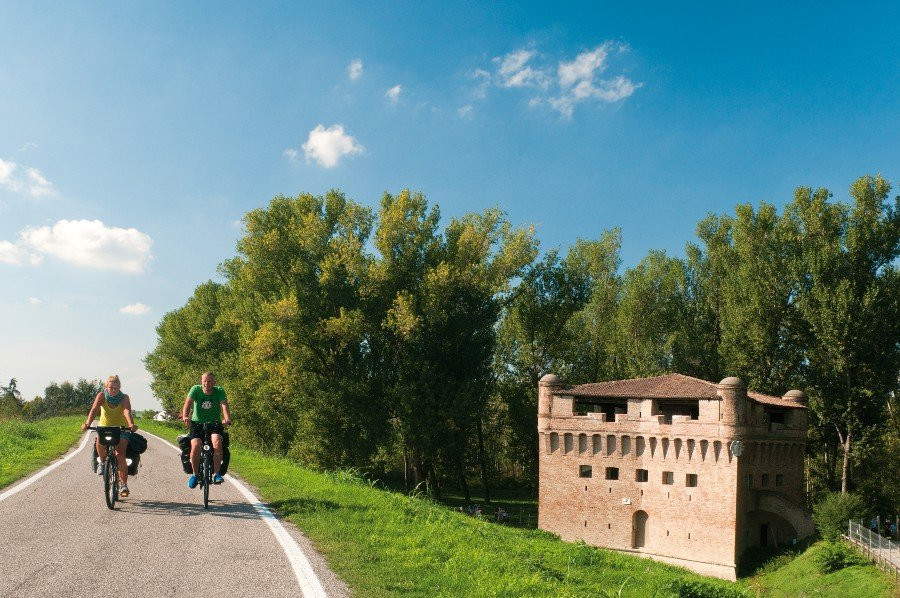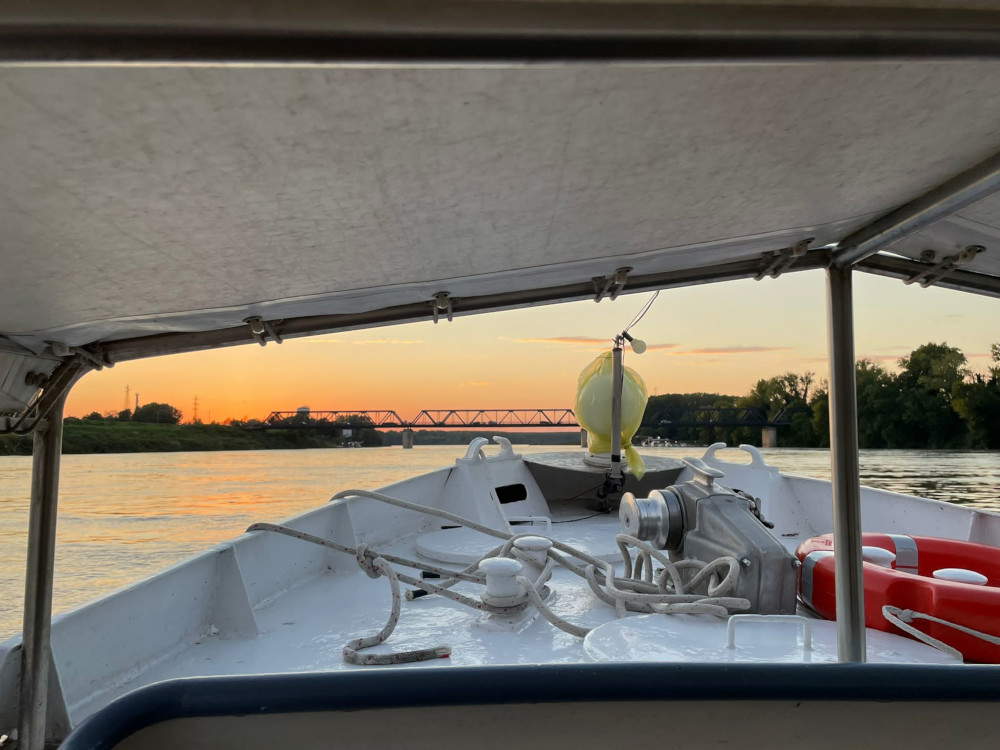Passionate about art, nature and maybe even cycling? Visit Ferrara leads you to discover the province of Ferrara with three new itineraries in which the natural scenery of the UNESCO World Heritage Site, the bicycle and the river coexist. The Rings of the Po itineraries are ring routes that, starting from Ferrara, allow you to admire the arts of the Renaissance, experience the naturalistic areas and taste the food and wine specialties of the area, under the banner of sustainable mobility and river tourism because they can be traveled by bike and boat. In fact, these are planned excursions between Delizie and nature: the Estensi’s Delizie, hunting grounds and leisure estates, are in fact still linked towater: they are surrounded by fertile land that emerged from land reclamation, and near many of these Delizie there are rivers and canals that are often still navigable. Thanks to a dense network of navigable canals, water connected the very city of Ferrara to the Delizie, sumptuous suburban palaces.
Built at the behest of the Dukes of Este, the latter, which have been recognized as a UNESCO World Heritage Site, are located on the waterways and were centers of political, economic and military control, but they were scenically and artistically remarkable, as they had large gardens and rooms decorated by the artists of the time. Among them, the Delizia di Benvignante in Argenta, designed by court architect Pietro Benvenuto degli Ordini for Borso d’Este, is a testament to the sober and refined elegance of Ferrara architecture in the Renaissance period. However, its interior cannot be visited. The Delizia del Verginese in Portomaggiore, originally a country house and later transformed into a ducal residence in the early 16th century by Alfonso I d’Este and given to the lady Laura Eustochia Dianti. The interior was decorated from the eighteenth century onward with stucco, Art Nouveau-style tempera flowers, shells, rosettes, scrolls and thick cornices; it is now home to the permanent exhibition Mors Inmatura. The Fadieni burial ground, which documents the discovery of a small Roman necropolis just a few steps from the Delizia. In addition to five stelae, on display here are the more than two hundred artifacts found in the tombs, clay materials, bronze artifacts, horse harnesses, a series of coins, and a collection of intact and finely worked glassware, very rare in the Ferrara area. The richest and most sumptuous Delizia, so much so that in the last century it was called the Versailles of the Este family, is that of Belriguardo in Voghiera: built at the behest of Niccolò d’Este in 1435, it was the first of the famous Este residences to be built outside the walls of Ferrara and was also used as a summer palace; the entire court moved to the palace of Belriguardo for about six months of the year and the duchy was officially governed from here. If the Delizia was once characterized by dozens of frescoed halls and extensive gardens, now the only surviving element to the devastation the palace has suffered for four centuries, since the Este family was forced in 1598 to leave the Ferrarese fiefdom to return it to the pope, retreating to Modena and Reggio Emilia, fiefs they had instead obtained from the emperor, is the Sala della Vigna: a large room frescoed with vine shoots, vine leaves and bunches of grapes at the top, giving the illusion of aì large arbor, supported by rows of four caryatids, against the background of imaginary landscapes. Instead, the d’Este lords are depicted on one of the walls, in attitudes similar to those in the frescoes of the Schifanoia palace in Ferrara. Artists such as Cosmè Tura and Ercole de’ Roberti, Pisanello, Battista Dossi, Girolamo da Carpi, and Garofalo worked there, but only descriptions remain of their masterpieces since almost everything has been lost. A wing of the Delizia di Belriguardo houses the Museo Civico, which collects artifacts from the Voghenza Necropolis. Also, Mesola Castle, halfway between a fortress and a Delizia, with its four crenellated towers, mighty walls and large windows. Built at the behest of Duke Alfonso II, the last descendant of the Este dynasty, the Delizia was once protected by nine miles of walls and surrounded by a forest for hunting. Other Delights in the Ferrarese territory include the 15th-century Villa della Mensa in Sabbioncello San Vittore, built at the behest of Bartolomeo della Rovere and frequented by illustrious personages; and the Delizia della Diamantina in Vigarano Pieve, a splendid estate created after Borso d’Este’s reclamation of the Polesine di Casaglia: it was named Diamantina after one of the emblems of the House of Este, the diamond; the Delizia di Fossadalbero, which according to tradition was the meeting place of Ugo, son of Marquis Niccolò III, and Parisina, the marquis’ young wife, whose love ended tragically. The palace was transformed into a Delizia by Borso d’Este shortly before his death; the Delizia di Zenzalino in Copparo, a villa cited among the jewels in the crown of Duke Borso d’Este, was enlarged and decorated by Bartolomeo Pendaglia, one of the richest men richest men in Ferrara; and Palazzo Pio in Tresigallo, built in the first thirty years of the 16th century by the nobleman Alessandro Feruffino, knight, captain of the militia of Duke Alfonso I d’Este. The latter Delizie are visible only from the outside.
The aforementioned Delizie are therefore part of the Anelli del Po itineraries: theAnello del Grande Fiume (Ring of the Great River ) starts from Ferrara and reaches Bondeno, in the footsteps of the Po, along the Burana canal bike path: a bike ride that will allow you to visit the Rocca di Stellata fortress with its peculiar star-shaped plan and the Civic Archaeological Museum. The Renaissance Ring, on the other hand, will lead to the discovery of the golden age of Ferrara, stopping at the Delizia del Belriguardo and the Delizia del Verginese. The route takes place with bike-boat intermodality and includes passing through the rich Ferrara countryside; after visiting the Delights, from the Sabbioncello Lock, we return to Ferrara by boat on the Po di Volano. Finally, the Anello delle Deli zie will focus on the extraordinary residences of the Este family: it will travel through the Ferrara countryside and cycle to Villa Mensa, continuing to the Delizia di Copparo and the Romanesque parish church of San Venanzio. At the Ro Ferrarese dock, you will sail to return to Ferrara on the Po Grande.
All itineraries include departure and return to Ferrara, where within the city walls is the famous Palazzo Schifanoia, built in 1385 at the behest of Alberto V d’Este, but it was Borso d’Este, marquis and later duke of Ferrara, who transformed it into its present appearance to “dodge boredom.” A symbol of the Ferrara of the Este family, the Salone dei Mesi is located here, with one of the most important fresco cycles of the 15th century in Italy. It constitutes one of the surviving architectural expressions of residences intended for representation, called Delizie Estensi.
“The residences of the Dukes of Este in the Po Delta exceptionally illustrate the reflection of the culture of the Renaissance on the natural landscape”: this is the motivation with whichUNESCO recognized the system of Este residences and the landscape surrounding them as a fundamental axis connecting the Renaissance city of Ferrara and its Po Delta. The Delizie and the network of navigable canals reflect precisely the grandeur of the household, and the proposed itineraries allow you to discover it.



 |
| Ferrara, three bike and boat routes to discover the Delights and nature |
Warning: the translation into English of the original Italian article was created using automatic tools. We undertake to review all articles, but we do not guarantee the total absence of inaccuracies in the translation due to the program. You can find the original by clicking on the ITA button. If you find any mistake,please contact us.